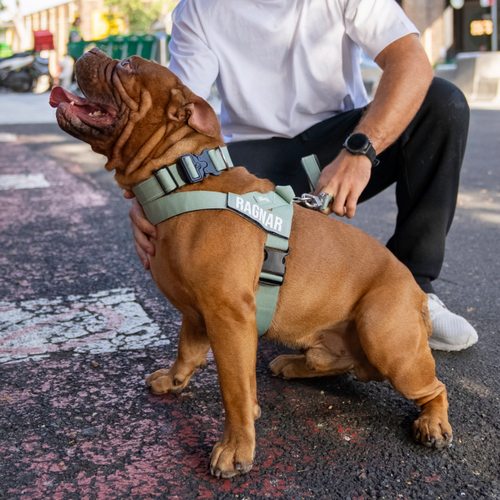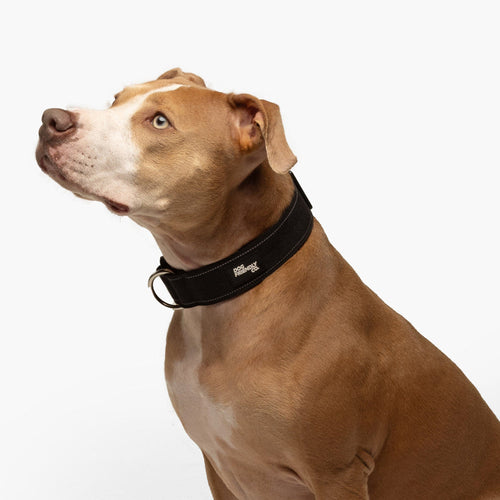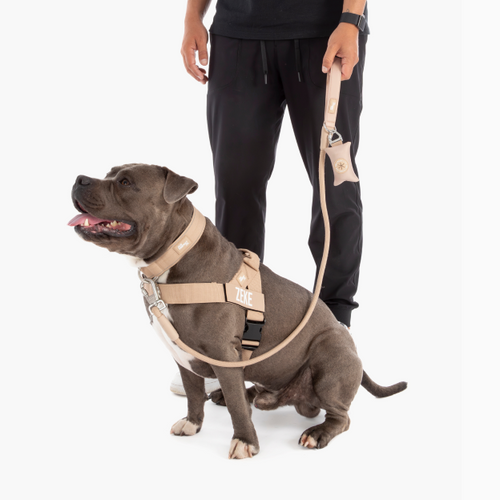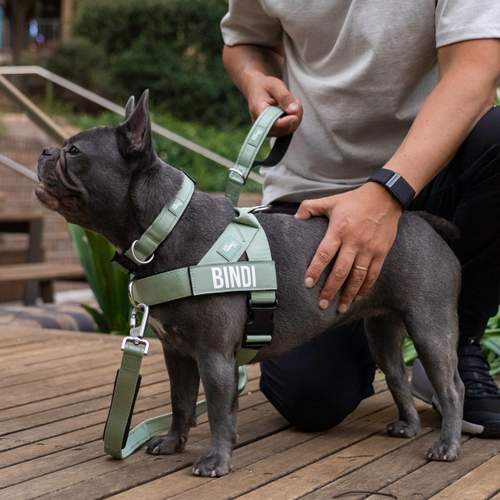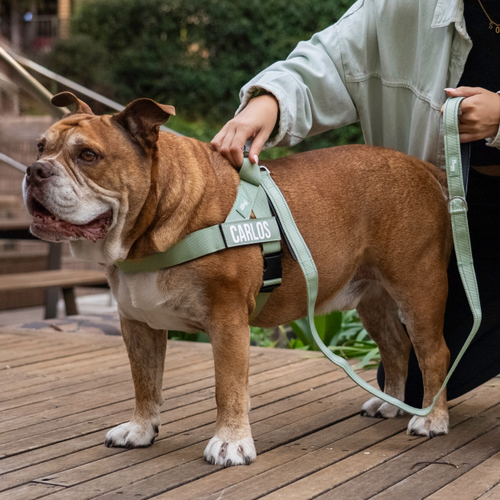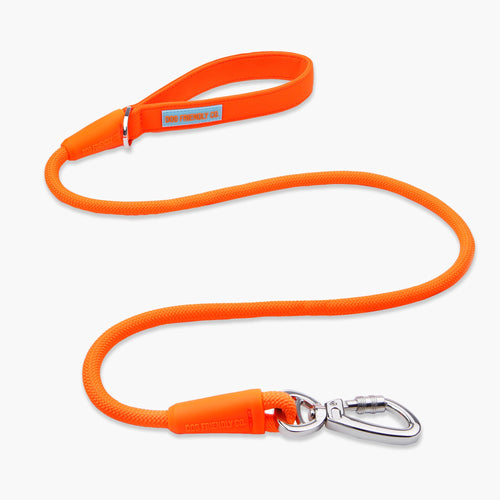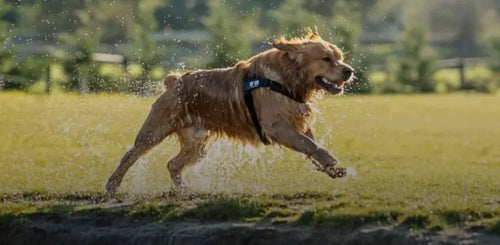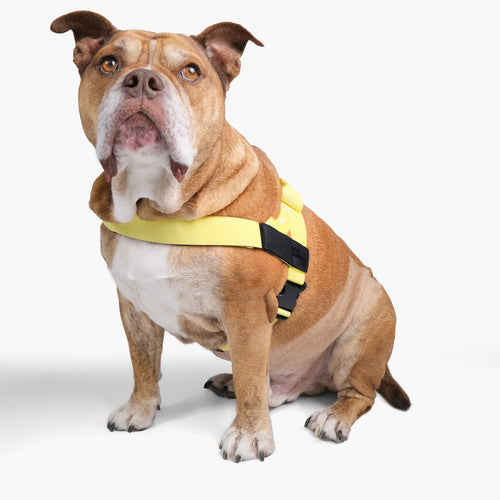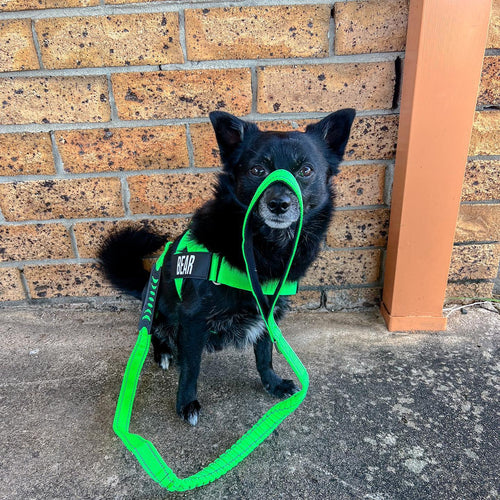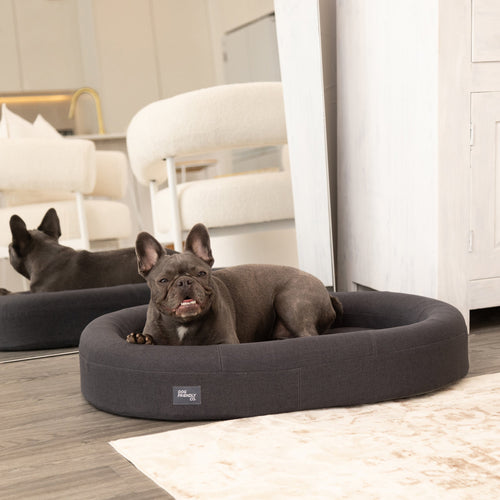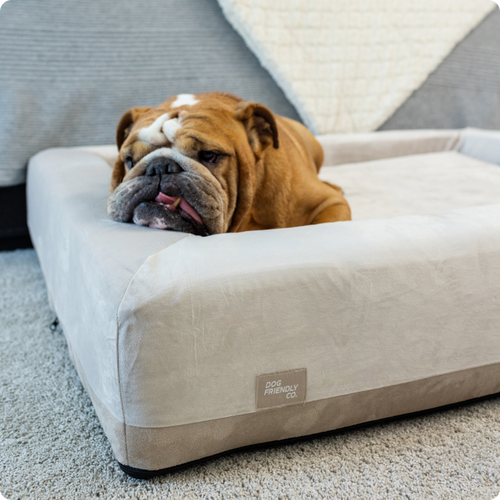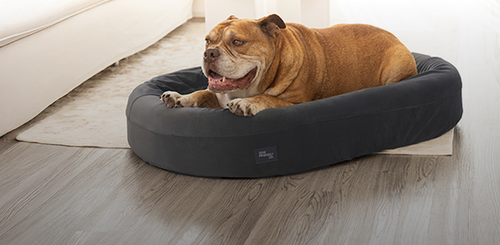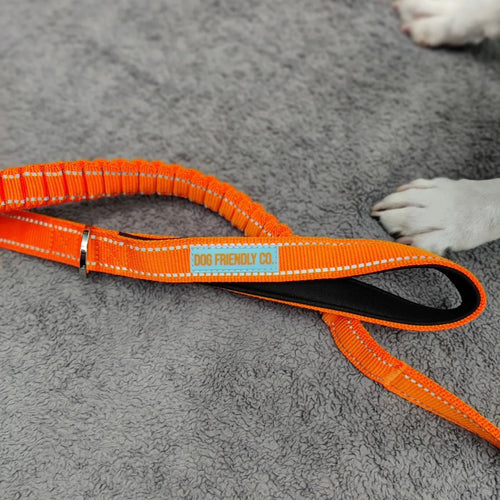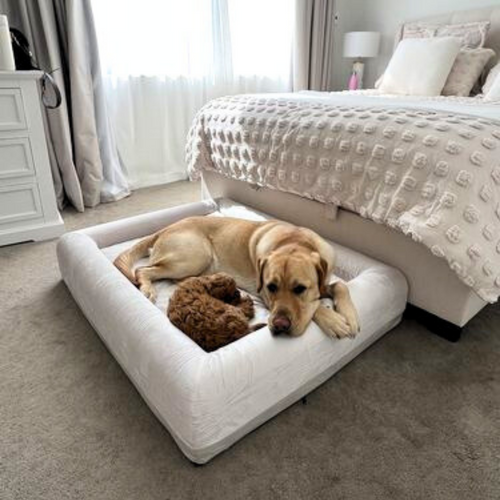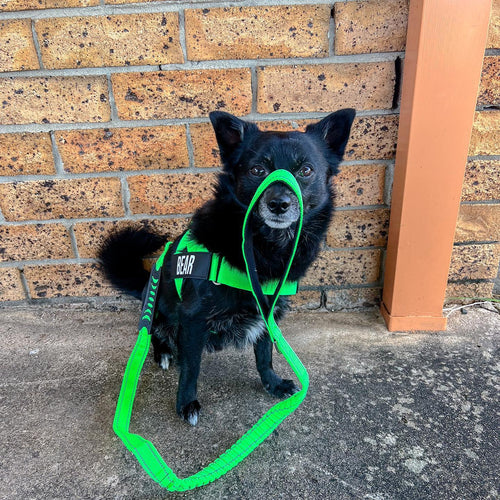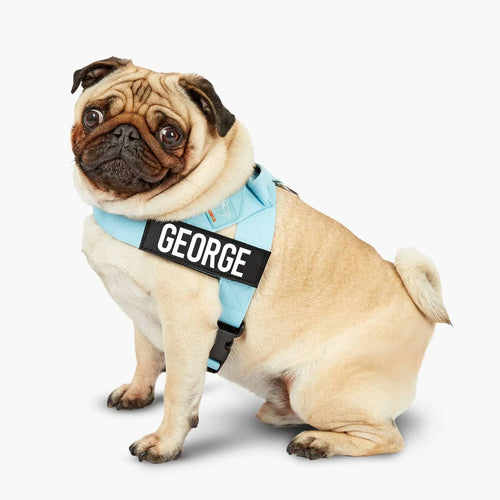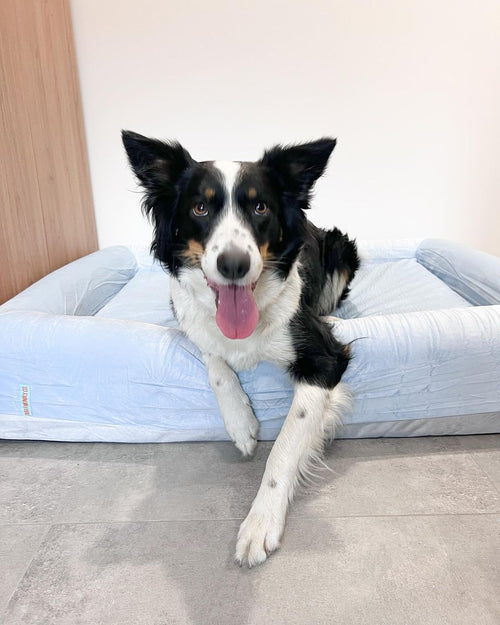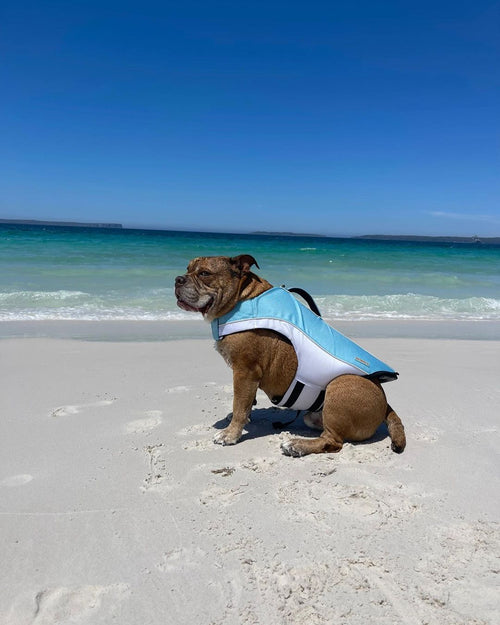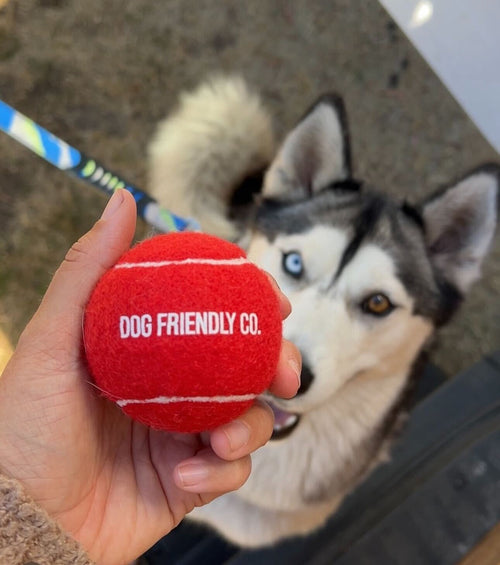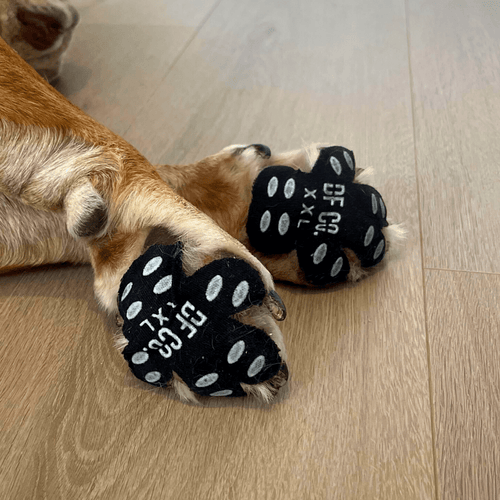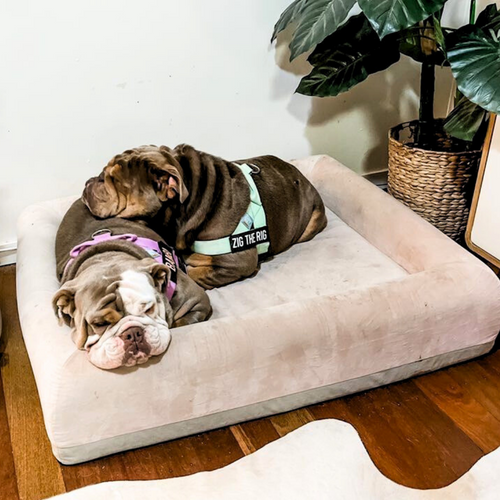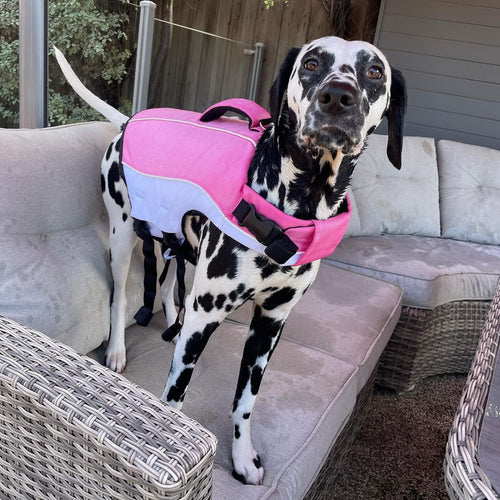Hey there, dog owners! Are you frustrated with your pup's constant tugging and biting on the dog leash during walks? You're not alone. This leash-biting behaviour is a common issue that can turn a peaceful walk into a chaotic tug-of-war. But don't worry; Dog Friendly Co has you covered with five effective tips so you can learn how to stop your dog from biting the leash.
It's always good to remember that your dog isn't doing this to frustrate you intentionally. Most of the time, they're just trying to get your attention or channel their excitement. Understanding this can help you approach the situation with more patience and less frustration.
Why Do Dogs Bite the Leash?
Before we dive into the training information, it's crucial to understand why dogs bite the leash. Your dog is biting the leash for various reasons; excitement in general or when seeing another dog, anxiety, even boredom.
Knowing the root cause of this unwanted behaviour can help you tailor your approach to stop biting the leash effectively. If your dog is overly excited, you might want to check out this article on how to teach your dog to walk calmly on a leash.
Leash biting can also be a sign of a deeper issue, such as leash aggression or anxiety. If your dog exhibits other signs of distress, it's crucial to address those issues as well. Sometimes, a simple change in routine or environment can make a world of difference.
How to Stop Leash Biting: A Step-by-Step Guide
Ready to turn those intense, frustrating walks into calm, enjoyable outings? Here's a step-by-step guide to help you do just that, featuring effective leash biting prevention strategies.
Consistency is key. Make sure to apply these tips every time you go for a walk. Dogs thrive on routine, and the more consistent you are, the quicker your dog will learn the behaviour you want.
To further emphasise the importance of consistency, it's crucial to involve all family members or anyone else who walks the dog in the training process. Everyone needs to be on the same page to avoid confusing your pup. Mixed signals can slow down progress and make the training less effective.
Choose the Right Leash
The first tip in getting your puppy or dog to stop biting the leash is to choose a sturdy, chew-resistant leash. A strong leash like the DF Co Bungee Dog Leash not only discourages biting but also ensures the safety of your pup. This leash will also help manage a dog tugging on the leash too. Tugging and biting are often part and parcel behaviour.
Keep the leash in front of your dog while walking. This makes it less accessible for biting and allows you to maintain better control. Another aspect to consider is the length of the leash. A shorter leash gives you more control over your dog's movements and makes it easier to redirect their attention if they start to bite. However, make sure it's long enough to allow some freedom of movement, otherwise your dog might feel restricted and act out in frustration.
If your dog is particularly strong or prone to tugging and biting, you might also consider a leash with a padded handle. This provides extra comfort for you, reducing the strain on your hand and making it easier to manage your dog's behaviour.
Use Positive Reinforcement
Positive reinforcement is crucial in dog training to stop leash biting. Whenever your dog behaves the way you want on the leash, like walking without biting, be sure to reward them with high-value treats or verbal praise. This helps them associate good behaviour with positive outcomes.
Timing is everything. Give the treat right away when your dog exhibits the behaviour you want. This immediate reward helps them make the connection faster. Positive reinforcement is also a particularly good way to train your puppy.
Introduce Bite Toys as an Alternative
If your dog loves to chew and bite, give them an appropriate outlet like a tug toy. Carry the toy during walks and offer it as an alternative anytime they go for the leash. This is an effective way to redirect their biting and tugging impulses.
Engage your dog with the toy beforehand to create a bond with it. This makes the toy more appealing during walks, helping to discourage them from grabbing the leash.
Opt for durable, dog-safe materials that can withstand your dog's bite force. Some toys are designed specifically for heavy chewers and can be a good investment to prevent your dog from turning their attention back to the leash.
Gradual Exposure to Leash Walking
Start with short, loose-leash walks and gradually increase the duration. This helps your dog get used to the leash without getting overly excited or frustrated. If you're wondering if you're walking your dog enough, this article can provide some insights.
Use this time to let your dog sniff around and explore. Allowing them to sniff can also help reduce their impulse to bite the leash out of boredom or frustration.
Also try to make each walk a little different to keep your dog engaged. Whether it's changing the route, walking at a different pace, or incorporating some basic obedience commands like "sit" or "stay,". Any type of variety can make the walk more interesting for your dog.
Consult a Professional
If you've tried all the leash training techniques and your dog is still biting the leash, it might be time to consult a professional. A certified dog trainer can provide personalised guidance on how to stop your dog from biting the leash out of frustration or any other reason.
Sometimes, the issue might be more complex than it appears. A professional can help identify underlying issues that might be causing the leash biting, offering more targeted solutions.
Common Mistakes to Avoid
When it comes to stopping your dog from biting their leash, there are some pitfalls to avoid:
- Using force or punishment: This can exacerbate the situation.
- Inconsistent training: Consistency is key for effective training.
-
Ignoring the issue: The problem won't solve itself, so proactive measures are essential.
Don't underestimate the power of patience and persistence. It might take some time to see results, but the effort is well worth it for peaceful, enjoyable walks with your pup.
Conclusion
Stopping your dog from biting the leash is totally doable. With a little patience and the right techniques, you can turn your walks into a peaceful and enjoyable experience. Consider investing in a quality dog harness to further improve your walks.
So go ahead, give these tips a try and reclaim the joy of walking your dog. Remember, the journey of training is also an opportunity to strengthen the bond between you and your furry friend. Happy walking!







































